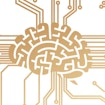
Children with the rare genetic disorder Prader-Willi syndrome have a high rate of autism spectrum disorders, with features including restricted and repetitive, compulsive and self-injurious behaviors. They also typically present with neonatal feeding difficulties, developmental delay, endocrine dysfunction and obesity. Prader-Willi syndrome is usually caused by the inactivation of a group of genes on chromosome 15. Spontaneous, or de novo, inactivating mutations in one of those genes, MAGEL2, have been identified in four children who have autism and other features of Prader-Willi syndrome. Loss of MAGEL2 function is likely to be responsible for autism predisposition in children with Prader-Willi syndrome.
